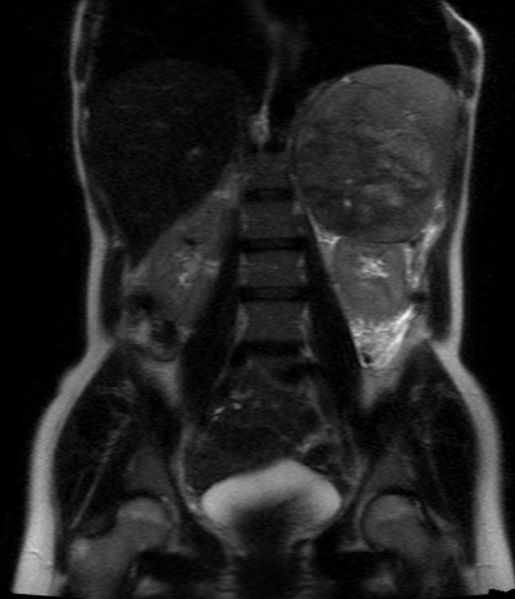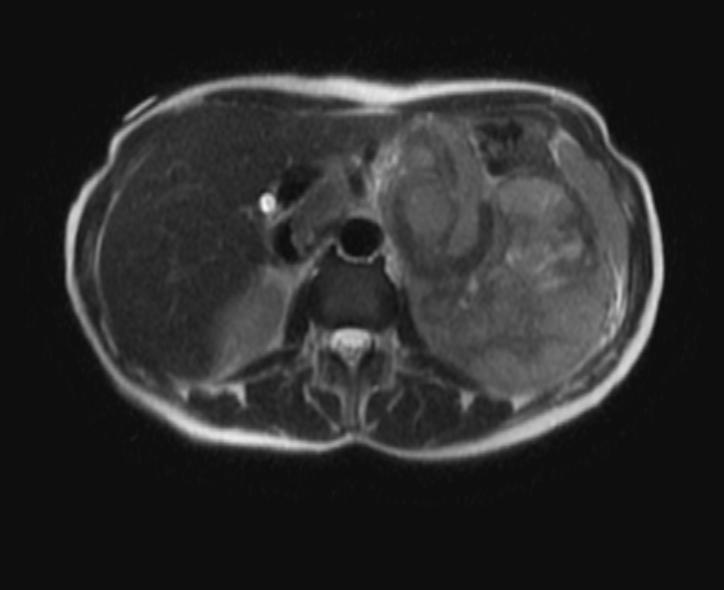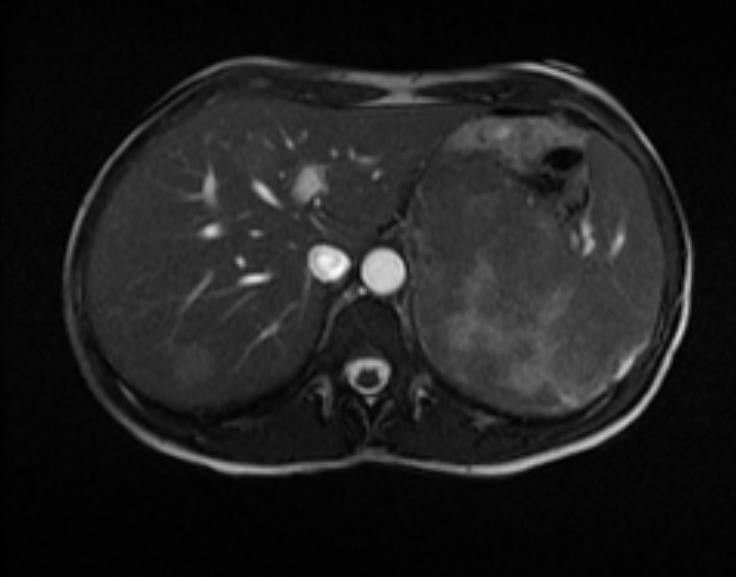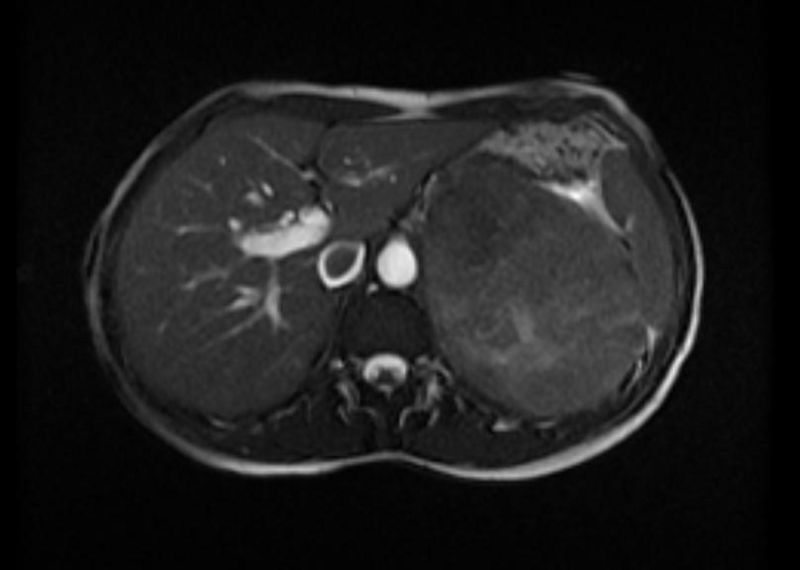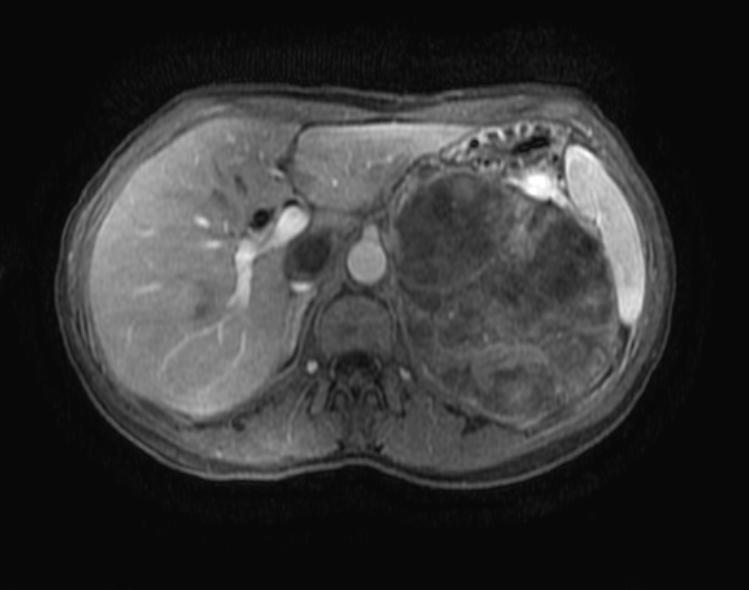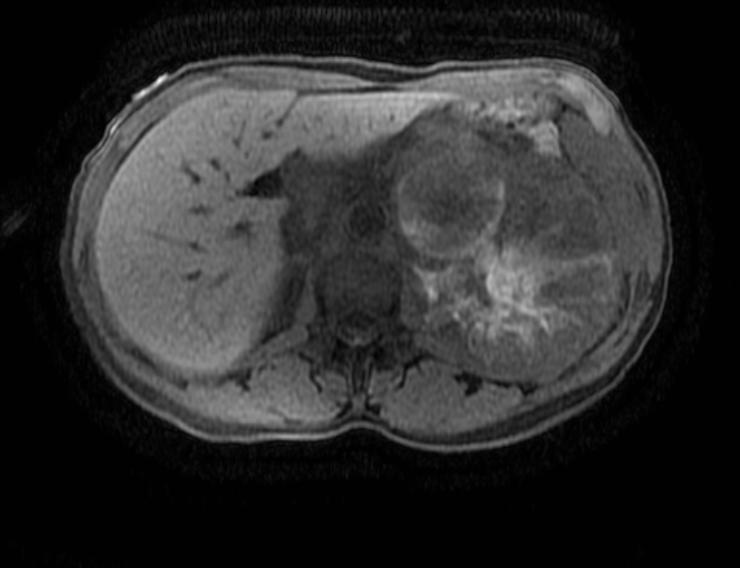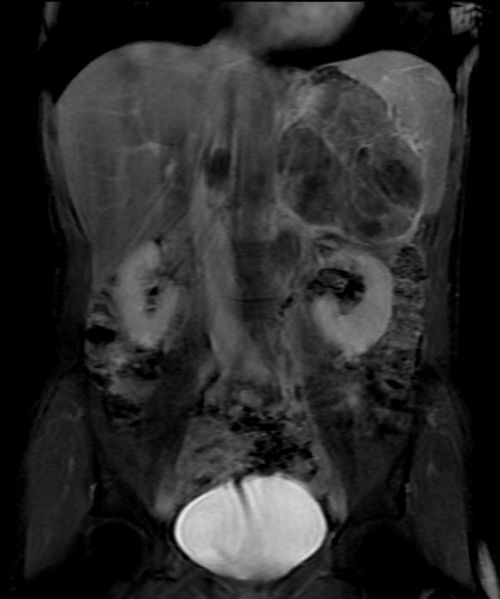Adrenocortical carcinoma MRI
|
Adrenocortical carcinoma Microchapters |
|
Differentiating Adrenocortical carcinoma from other Diseases |
|---|
|
Diagnosis |
|
Treatment |
|
Case Study |
|
Adrenocortical carcinoma MRI On the Web |
|
American Roentgen Ray Society Images of Adrenocortical carcinoma MRI |
|
Risk calculators and risk factors for Adrenocortical carcinoma MRI |
Editor-In-Chief: C. Michael Gibson, M.S., M.D. [1] Associate Editor(s)-in-Chief: Ahmad Al Maradni, M.D. [2]
Overview
MRI scans are helpful in differentiating between adrenal adenoma, carcinoma, and metastatic lesions.
MRI Findings in adrenocortical carcinoma
- Adrenocortical carcinomas are usually large and appear as heterogeneous masses on both T1- and T2-weighted images owing to the presence of internal hemorrhage and necrosis.
- Adrenocortical carcinoma can contain foci of intracytoplasmic lipid, which results in a loss of signal intensity on out-of-phase images.
- Large adrenal carcinomas tend to invade the adrenal vein and inferior vena cava.
- On MRI, ACCs appear isointense to hypointense relative to liver parenchyma on T1-weighted images and hyperintense relative to liver parenchyma on T2-weighted images(98).
- On chemical-shift MRI, the presence of intracellular lipid can cause regions of signal loss on out-of-phase images relative to inphase images (98).
- Inferior vena cava invasion has been reported in 9% to 19% of cases at presentation (98). Due to the multiplanar capability of MRI, direct invasion of adjacent organs may be better shown.
MRI Examples of adrenocortical carcinoma
